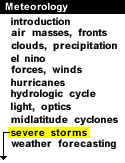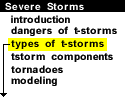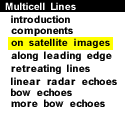
|
This infrared satellite view of an eastward moving squall line, extending from the Ohio River Valley southwestward into Louisiana, shows the extreme lengths that thunderstorm lines can achieve. The lower, warmer anvils on the north end of the line and the colder, higher cloud tops at the south end reveal the tendency for older, weakening storms to be shed on the north side of the line with newer and stronger development near the south end.
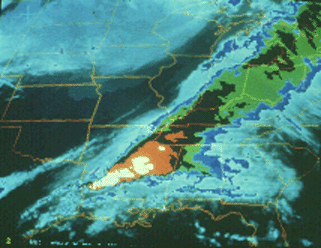
The second satellite photo shows a huge anvil cloud arising from a large cluster of storms. This is called a mesoscale convective system or "MCS". An entire MCS cannot be viewed from the ground and in some cases not even by a single radar, so we use the satellite perspective. It is a group of multicell storms, often dominated by a vigorous squall line on the downwind (east) side and a number of weaker multicell cluster storms in the interior.
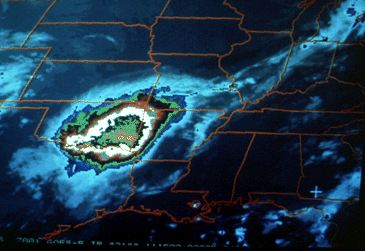
An MCS often will bring severe weather and heavy rain with the squall line, and additional heavy rainfall with the interior storms. A number of major flash floods have resulted from MCS passage, making this large storm complex an extremely important grouping of multicell thunderstorms to recognize.

components |
|

along leading edge |


